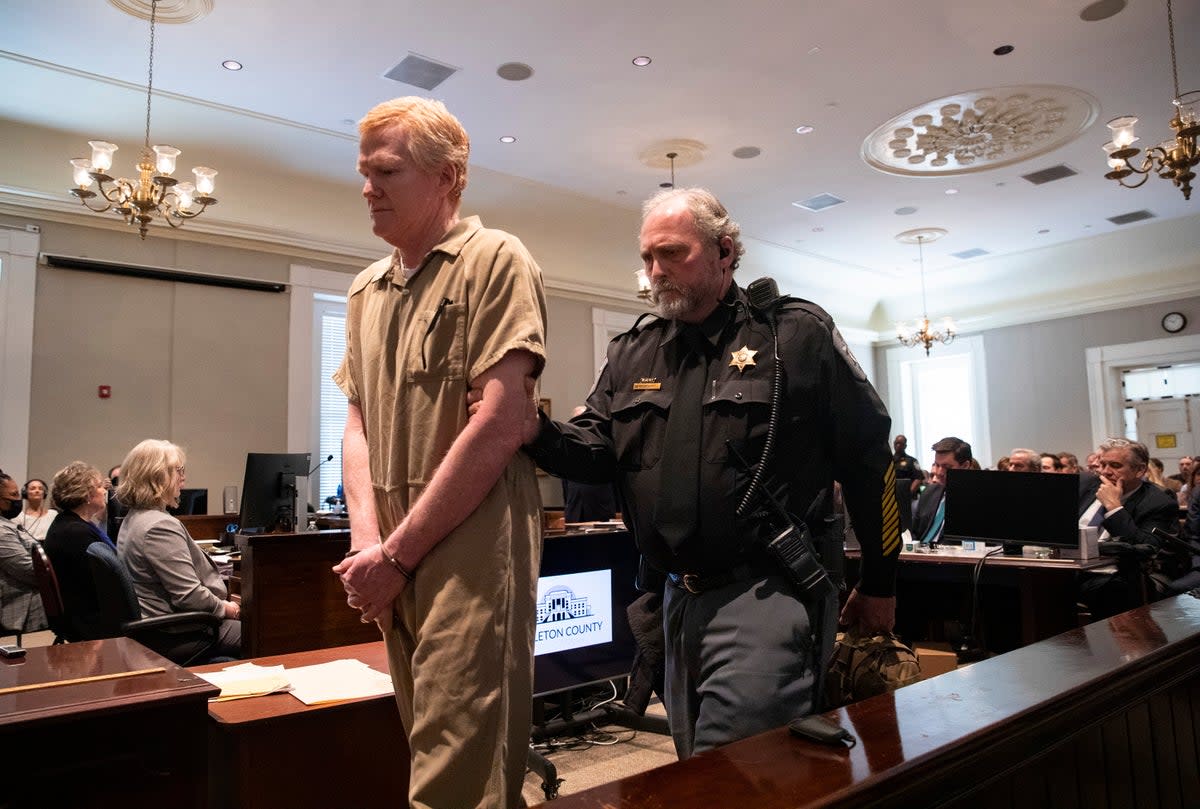Voices: Alex Murdaugh’s trial proves cameras don’t belong in the courtroom

Alex Murdaugh has been sentenced to life in prison in the murders of his son Paul and his wife Maggie. News of the sentencing came on Friday (3 March), the day after a jury found the South Carolina lawyer guilty of both murders after three hours of deliberation.
The conviction and sentencing mark the end of a high-profile, often sensational trial. Murdaugh’s trial aired live on TV and online, meaning viewers around the world could follow every minute of the proceedings. Videos of specific moments, such as the testimony of Murdaugh’s surviving son Buster, have racked up millions of views on YouTube.
Dramatic moments during the trial, reported on by The Independent’s Rachel Sharp, included a bomb threat, Murdaugh’s family members being moved to the back of the courtroom after allegedly displaying improper conduct, and a juror being dismissed after discussing the case with multiple people. There were also the times a defense attorney, holding a rifle that appeared to be pointing in the direction of the prosecution, joked the situation was “tempting”, and the time a prosecutor pointed a rifle at a witness’s head—with the witness’s cooperation, in an attempt to dispute the defense’s theories about the murders.
It’s hard to look back on the Murdaugh trial and not think of experts who have warned about the dangers of inviting television cameras into the courtroom. “Although defendants have a right to a public trial, the courts have yet to rule that they have a right to a televised trial,” Ruth Ann Strickland, a former professor of Government and Justice Studies at Appalachian State University, wrote in 2009 for the Middle Tennessee State University’s First Amendment Encyclopedia.
Federal judges, she noted, “have generally rejected television and camera coverage of court proceedings, arguing that live television broadcasts, in particular, distract trial participants, prejudice trial outcomes, and thus deprive defendants of fair trials.”
“Some witnesses fidget nervously before cameras, possibly harming their credibility with jurors,” she added. “Opponents also argue that the broadcasting of trials leads lawyers to grandstand for the camera, diminishing courtroom decorum.”
The first trial to be televised nationally was that of serial killer Ted Bundy, in 1979, on charges related to an attack at a sorority house in Florida during which he brutally attacked four young women, killing two of them. Bundy represented himself for much of the proceedings, meaning he got to cross-examine first responders about his own crime, turning the trial into what Esquire once aptly deemed a “sadistic show.” He also took advantage of a piece of Florida legislation to marry himself to his then-girlfriend, whom he was questioning on the stand, during the proceedings.
Look at other televised trials, and you’ll find more outrageous moments: OJ Simpson and the infamous gloves. Jeffrey Dahmer’s trial, a testimony so gruesome Court TV aired it on a 20-second delay to allow the station to “put a red dot on the screen to warn viewers when the trial is expected to involve ‘graphic testimony.’” More recently, there was the Depp v Heard trial in Fairfax, Virginia, and Johnny Depp supporters booing Amber Heard outside the courthouse – and bringing alpacas to the premises on one occasion.
The idea behind public trials was to ensure transparency, by allowing members of the public to witness the legal process for themselves. But blown up to the scale of television, trials become less about due process, and morph into a spectator sport.
The legal process should not make for good television. It should not be exciting. It should not be made of Perry Mason moments. It should be low-key, diligent, and boring. Televised trials, and the enormous amounts of intention they invite, continue to create the potential for a circus. When that happens, no one wins.
